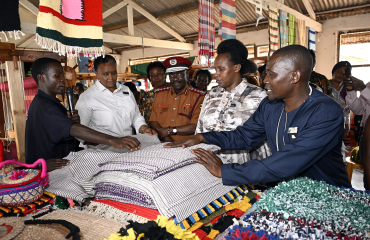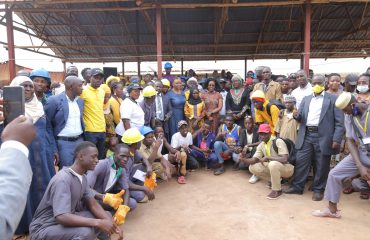The Government has set ambitious targets for expanding access to electricity and increasing the share of renewable energy in the country’s energy mix. Over the next five years, Uganda is poised to make significant progress towards these goals.
One of the key areas of focus for Uganda’s energy sector is expanding access to electricity. According to the World Bank, only 28% of Uganda’s population had access to electricity in 2018. This lack of access has significant implications for economic development and quality of life, as it limits opportunities for businesses and makes it difficult for individuals to access basic services like healthcare and education.
To address this challenge, the Government has set a target of achieving universal access to electricity by 2030. Over the next five years, the Government plans to connect an additional 1.5 million households to the grid and increase the electrification rate from 28% to 50%. To achieve these goals, Uganda will need to invest in expanding the electricity grid and building new power generation capacity.
One of the main sources of new power generation in Uganda is expected to be renewable energy. The country has abundant solar, wind, and hydropower resources, which could be harnessed to provide clean and reliable electricity. In recent years, Uganda has made significant progress in developing its renewable energy sector. According to the International Renewable Energy Agency (IRENA), Uganda had 1,067 megawatts (MW) of installed renewable energy capacity in 2020, which accounted for 25% of the country’s total installed capacity.
Over the next five years, Uganda is expected to continue to invest in renewable energy, with a particular focus on solar and wind power. In 2020, the Government launched a programme to install 500,000 solar home systems in rural areas by 2025, which will provide clean electricity to households that are not connected to the grid. In addition, Uganda is planning to develop several large-scale wind farms, including the 100 MW Kabonge Wind Farm and the 150 MW Ayite-Nyende Wind Farm.
Another area of focus for Uganda’s energy sector is improving energy efficiency. According to the International Energy Agency (IEA), Uganda’s energy intensity – the amount of energy consumed per unit of GDP – is one of the highest in the world.
This is partly due to the country’s reliance on inefficient technologies and practices, such as kerosene lamps and biomass stoves. Improving energy efficiency could help to reduce energy costs for households and businesses, as well as reduce greenhouse gas emissions.
To address this challenge, Uganda is planning to launch an energy efficiency programme in the coming years. The programme will focus on promoting the use of energy-efficient technologies and practices, such as LED lighting and efficient cooking stoves. In addition, the Government is planning to introduce energy efficiency standards for appliances and buildings, which will help to ensure that new buildings and appliances are more energy-efficient.
One of the key challenges facing Uganda’s energy sector is the high cost of electricity. According to the World Bank, Uganda has some of the highest electricity tariffs in the region, which can make it difficult for businesses to operate and for households to afford basic electricity services. To address this challenge, the Government is planning to invest in reducing the cost of electricity generation and transmission.
One way that Uganda is planning to reduce the cost of electricity is by investing in regional power interconnections. Uganda is currently connected to several neighboring countries through regional power grids, which allows it to import and export electricity depending on demand. By expanding these interconnections and increasing the amount of electricity that Uganda can import from its neighbors, the Government hopes to reduce the cost of electricity and improve reliability.
On expanding access to Electricity, according to the World Bank, only 28% of Uganda’s population had access to electricity in 2018. This lack of access to electricity has significant implications for economic development and quality of life, as it limits opportunities for businesses and makes it difficult for individuals to access basic services like healthcare and education.
To address this challenge, the Ugandan Government has set a target of achieving universal access to electricity by 2030. Over the next five years, the Government plans to connect an additional 1.5 million households to the grid and increase the electrification rate from 28% to 50%. Achieving these goals will require significant investments in expanding the electricity grid and building new power generation capacity.
One of the key sources of new power generation in Uganda is expected to be renewable energy. Uganda has abundant solar, wind, and hydropower resources, which could be harnessed to provide clean and reliable electricity.
Hydropower is also expected to play an important role in Uganda’s energy sector over the next five years.
Uganda has hundreds of small rivers and streams that could be harnessed to provide clean electricity to rural communities.
In recent years, the Government has launched several programmes to support the development of small-scale hydropower projects, including the Small-Scale Hydropower Development Project, which aims to develop 12 small-scale hydropower projects with a total capacity of 8 MW.
Improving energy efficiency is a key area of focus for Uganda’s energy sector over the next five years.
Improving energy efficiency could help to reduce energy costs for households and businesses, as well as reduce greenhouse gas emissions.
To address this challenge, Uganda is planning to launch an energy efficiency programme in the coming years. The programme will focus on promoting the use of energy-efficient technologies and practices, such as LED lighting and efficient.



